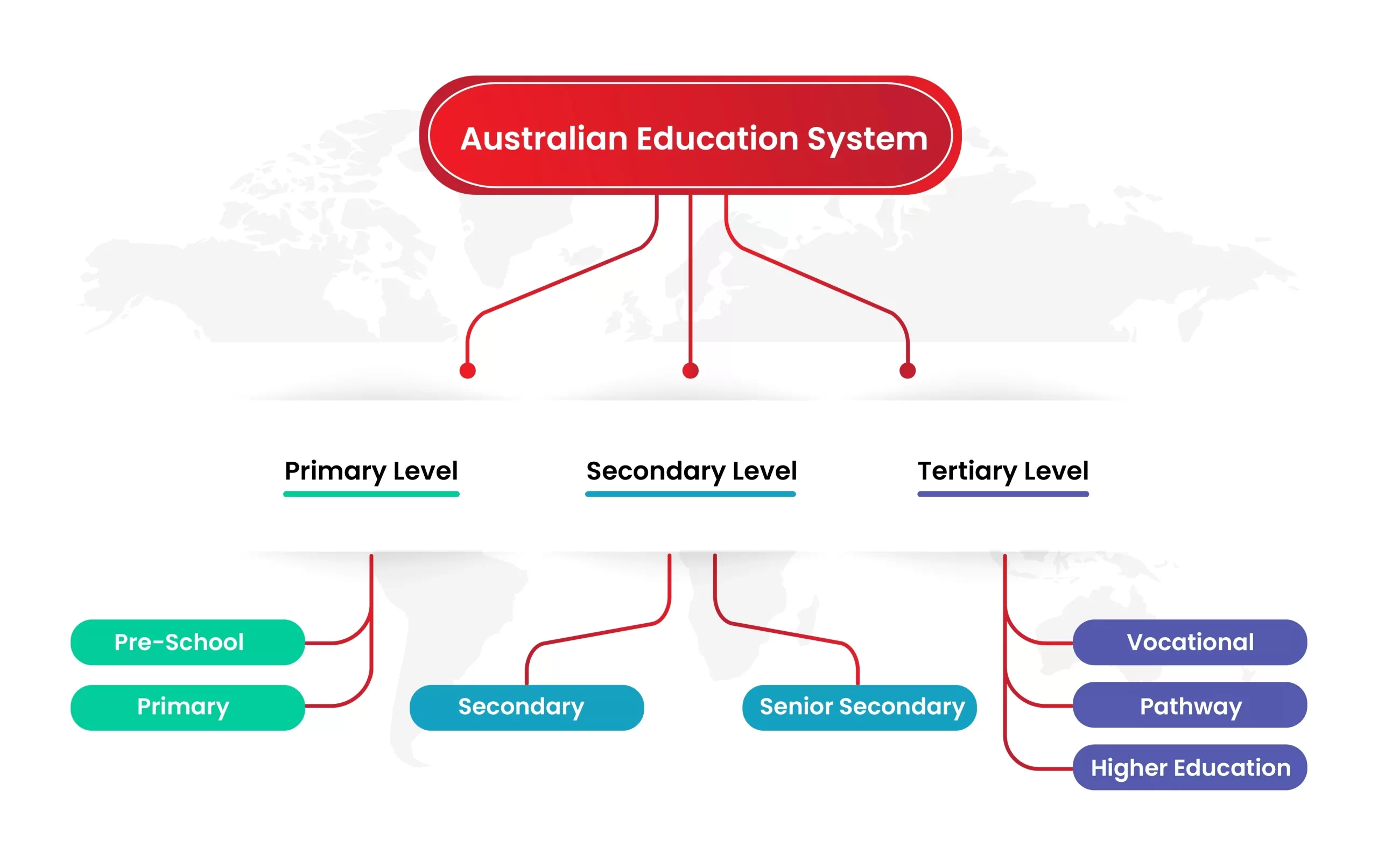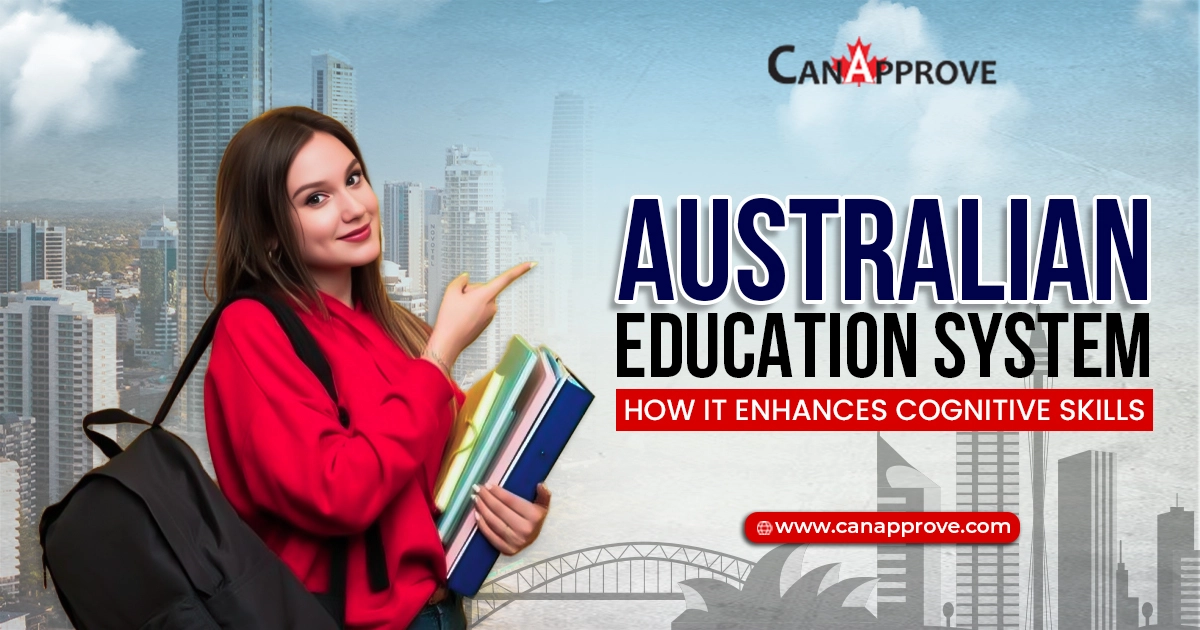India is a diverse country with a natural progression of advancements in technology and the economy. Although India’s neighboring countries may share certain commonalities, Australia, which does not border India, also exhibits some similarities. Some of them are diversity, the home of many languages, love towards cricket, and so on. Though there are similarities, there are some differences as well. Australia is a developed country, whereas India is a developing one. With a lower GDP compared to India, Australia achieved this “developed” status. One possible reason for the difference in rankings could be their distinct education systems. The recent U.S. News & World Report (2024) ranked the Australian education system 8th, while it ranked the Indian education system 33rd.
Henceforth, for deeper understanding of the education system in Australia, the blog showcases several key aspects in a comprehensive manner. Topics like ranking, frameworks, and, to top it all, it unveils the most important aspect: enhancement of cognitive skills are covered. Hence, sit tight and listen to the tale of our outranked education system.
Table of Content
1Australian Education System for International Students2Australian Qualifications Framework3Australian Education System Ranking4How the Australian Education System enhances Cognitive Skills5Conclusion6Frequently Asked Questions
Australian Education System for International Students

As previously stated, the Australia’s education is considered one of the best education systems across the world. The Australian school system ages around 13 years, and it offers a wide range of study options in Australia and around the world. Like India, Australia too has three levels of education:
- Primary Level
- Secondary Level
- Tertiary Level
Primary Level
The primary level of education is the foundation level, providing students with the basic knowledge and skills to advance towards their educational career. Within this level, there are two subsects: preschool and primary.
Pre-school: The Australian Government welcomes students aged five into their education system. During preschool time, children can learn the foundational skills such as basic literacy and numeracy, social interaction and development. These skills would prepare them for their academic journey.
Primary: Students begin their primary-level education at age six or seven, depending on the school in which they are enrolled. This is a non-skippable level of education since they can learn the core subjects in depth.
Secondary Level
Similar to all other education systems, the Australian education system also includes a secondary level, lasting a total of 6 years. The Australian school system grades students with alphabets in accordance with their scores. Since this phase is an intermediary one, it helps to prepare students for higher education or the workforce by providing a well-rounded education. Within the secondary level, there are two subsects, just like the primary level: secondary & senior secondary.
Secondary: The duration of this level is 4 years. During this phase, instructors taught students how to build the foundation of education and explore the subjects in greater depth.
Senior Secondary: In contrast to the secondary level, the duration of the senior secondary level is only two years, half the length of the secondary level. During this phase, instructors train students to specialize in higher education subjects or vocational training.
Tertiary Level
After school education, the students go for further higher education or enter the career. Otherwise, they opt for vocational studies in order to strengthen their fundamental knowledge. Tertiary level contains three types: vocational, pathway, and higher education.
Vocational: Vocational education offers practical courses that prepare students to enter into the workforce. Usually, the Australian government’s TAFE Institutes (Technical And Further Education) and private RTOs (Registered Training Organizations) teach vocational education.
Pathway: Pathway courses are designed for students to meet higher education’s academic requirements and enhance their skills. In general, there are different kinds of pathways, and hence the student needs to choose the right one.
Higher Education: Universities and colleges offer different credentials, like bachelor’s, master’s, and doctorate degrees in different areas of study. Usually, international students come to Australia and brighten their future via higher education. There are three types of universities in Australia:
- ‘Group of 8’ universities: The Group of 8 are the top universities in Australia, known worldwide for their excellence. With the use of the latest technology and having close industrial links, international students decide to study abroad and come to Australia.
- Public Universities: There are 37 public universities in Australia out of 42 total. Since these universities are government-funded, international students might find them more pocket-friendly. Despite being more affordable, public universities keep adequate standards for education and fall in the same range as the top quality of education in Australia.
- Australian Technology Network: The Australian Technology Network (ATN) universities aim to address issues across various sectors, such as engineering, nursing, business, IT, and design, by conducting research that leads to effective solutions.
Australian Qualifications Framework
The Australian Government had introduced the Australian Qualifications Framework (AQF) in 1995. The purpose of bringing the framework is to set apart the Australian education system from many other nations. The framework consolidates all educational standards into ten levels, as shown in the table below:
| S.No | Sectors of Education | Levels | About | Description |
| 1 | Primary | Level 1 | Pre-School | Basic skills and literacy knowledge |
| Level 2 | Primary | Building further on the Level 1 education | ||
| 2 | Secondary | Level 3 | Secondary | Developing ability to focus on multi-subjects |
| Level 4 | Senior Secondary | Advanced skills and knowledge for further learning | ||
| 3 | Tertiary | Level 5 | Diploma | Specialized knowledge and skill for work or for further learning |
| Level 6 | Advanced Diploma / Associate | Knowledge and skills for the next level of skilled jobs | ||
| Level 7 | Bachelors | Broad and in-depth knowledge on a particular subject for a professional career | ||
| Level 8 | Bachelor’s Honors / Graduate Diploma | Advanced level of knowledge in that particular subject | ||
| Level 9 | Masters | Gaining expert knowledge in a specific field or industry | ||
| Level 10 | Doctorate | Learning and contributing our part in that field |
Australian Education System Ranking
The Australian educational sector is one of the finest in the world owing to its renowned structure and heterogeneous diversity. Australia is continuously reforming its educational practice and adding contemporary knowledge for worldwide recognition as a developed nation. Australia’s provision of higher education services has earned it global recognition, with many of its universities consistently ranked among the best in the world. The global rankings of the Australian education system are as follows:
- Australian Education ranked 8th according to the US News and World Report, 2024.
- PISA Ranking, 2022 – Ranked 11 with a score of 497
- QS World University Rankings, 2025 – More than 30 universities
- Times Higher Education (THE) World University Rankings, 2024 – 37
- Global Competitiveness Index, 2024 – Improved to 13th rank
How the Australian Education System enhances Cognitive Skills
In general, the education system in Australia for international students enhances the cognitive skills in numerous ways. Some of the ways in which Australian education enhances cognitive skills are as follows:
- Critical Thinking and Problem-Solving: Courses encourage questioning, evaluating evidence, and self-directed learning so as to develop deeper conceptual understanding and analytical skills.
- Diverse Learning Environment: Interaction with students from different cultural backgrounds broadens perspectives and enhances cognitive flexibility and creativity.
- Research and Inquiry: Students are encouraged to carry out investigations at an early stage, which fosters skills of analysis, synthesis, and evaluation.
- Holistic Support: Student support systems-including individualized learning, academic tutoring, and mentoring-help students to address and deal with challenges in cognitive and emotional growth contexts.
- Real World Preparation: Work-integrated learning (internships and placements) provides an invaluable connection between theory and practice, while at the same time developing skills in analysis, problem-solving, and decision-making.
- Using Technology to Enable Learning: Enhanced online learning and the latest technology correspondingly promote engagement and enhance technology literacy while supporting cognitive development.
- Different Assessment: Several forms of assessment (essays, group projects, and exams) inculcate an analytical spirit within students and prepare them to express their thoughts coherently.
- Autonomy and self-directed learning: Each student learns to self-regulate and learn independently. This is helpful to cognitive development, such as time management and motivation.
- Interdisciplinary learning: Exposure to different subjects and interdisciplinary courses stimulates abstract thought and develops the ability to connect ideas both within disciplines and across disciplines.
Conclusion
In conclusion, the Australian education system is possibly unique in its most valuable features, which range from being inclusive and flexible to establishing strong support for international students. Such strengths provide a myriad of benefits, but such challenges as equitable access, funding, and the continual adaptation to evolving global demands remain top areas of focus. But one can overcome these challenges by selecting the appropriate university and course for your career. If you are looking to study under Australian education and wondering where to start, consider CanApprove.






